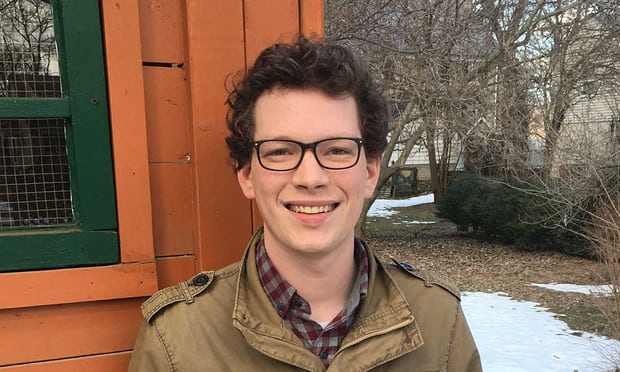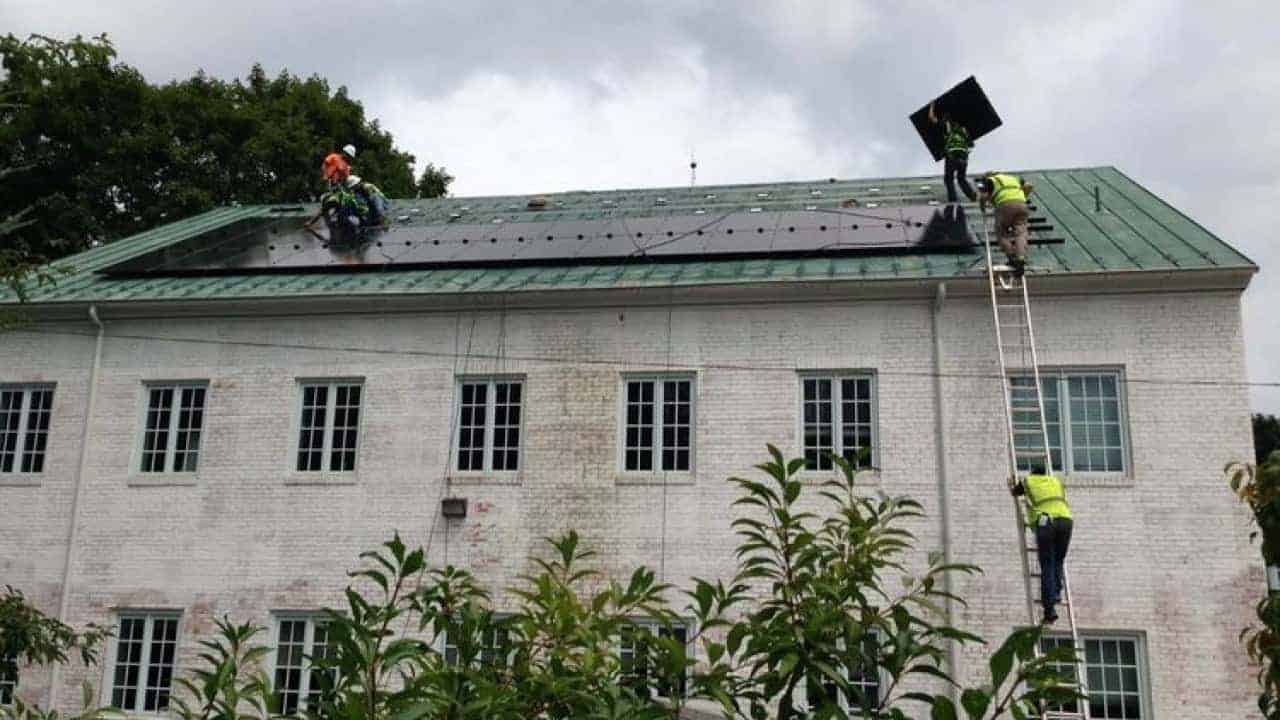Solar Holler, a solar installation and financing firm in Appalachia, is far from your typical solar contracting company. Inspired to use solar energy to help revitalize his home state of West Virginia, where the decline of the coal industry has devastated the local economy, Dan Conant founded Solar Holler in 2014.
Since then, he has pioneered new financing approaches to make solar accessible to all regardless of income in a state where the economics of solar have traditionally been challenging due to low electricity prices and limited solar incentives. The company is also playing a crucial role in providing job training to prepare local residents for careers in solar installation. These new economic opportunities are significant in a region where jobs in the coal industry—once the dominant employer—have declined by almost 90 percent in two generations.
Solar Holler’s approach offers insights for those who want to make solar more accessible, and for solar entrepreneurs and advocates working in states where the solar market is still nascent. Solar Holler has been using Aurora for its solar designs since its founding so we were thrilled to have the opportunity to learn more about their work.
We sat down with Dan Conant recently to learn about Solar Holler’s strategies. We’re excited to share that conversation with you today:
 Dan Conant, founder of Solar Holler. Photo credit: Dan Conant.
Dan Conant, founder of Solar Holler. Photo credit: Dan Conant.
To start, would you tell us about Solar Holler’s work and what differentiates your approach?
After working at several solar startups, I decided to move back to my hometown in West Virginia to found Solar Holler. Our original mission was to make solar affordable for community organizations around Appalachia who couldn’t afford it. Our initial work focused on churches, libraries, homeless shelters, and all sorts of other amazing community groups around the state that do great work but have a really hard time accessing the benefits of solar. Since then, we’ve expanded who we serve and now help West Virginia households and businesses access solar as well.
Our first project was with Shepherdstown Presbyterian Church. To enable the church to install solar with no money down, we created a crowd-funding approach that was the first of its kind. We call it a Virtual Power Plant approach.
Essentially, church members volunteered for a program that would let a partner company, Mosaic Power , briefly reduce their electricity consumption through controllers on their water heaters during times of high electricity demand. Normally, Mosaic pays participants a recurring rebate check for participating, but in this case, the church members agreed to donate the rebate checks to repay the loan for the solar project.
It was a $55,000 project, and we created a revolving fund, so that once the loan is repaid the funds can be used to support future clean energy projects.
Another big part of Solar Holler’s work is its job training program, which prepares West Virginians for careers in solar installation. What can you tell us about that program and how it came about?
After that first project was completed, we started to get so much demand for solar projects that it outstripped the capacity of all trained solar installers in the state!
So that led to the creation of our job training program. We partnered with a nonprofit called Coalfield Development Corporation to develop a program to build the solar workforce in West Virginia.
Participants sign on as apprentices for two years. During the apprenticeship, they are paid for their work and earn their Associate’s degree and NABCEP certification—and they pay no tuition which differentiates our program from a lot of other solar job training options.
In a past interview , you talked about how effective solar job training programs for coal mining communities must go hand-in-hand with building the market for solar energy, otherwise trainees need to leave the area to find solar jobs. How does Solar Holler work to build the demand for solar in West Virginia?
A big part of it is setting up the financing tools. West Virginia is not a well-to-do state; there’s not a lot of cash floating around. It’s definitely not California or DC or Massachusetts or other hot solar markets. What those solar markets have going for them is high prices of electricity and they tend to be wealthier states. We don’t have either of those in West Virginia.
Compared to California, where electricity prices can go over 30 cents a kilowatt, for residential energy here in West Virginia we’re in the 10-11 cent range. So in order to make it affordable for folks and actually build demand, you need to have the financing tools lined up, you need to drive the costs down. And, eventually when you do that it’ll take off.
We didn’t want to train people for a job that doesn’t exist. Our goal wasn’t to just put people through the program and have them come out on the other side and move to California or New Jersey or Massachusetts to take a solar job, because we’re doing this for West Virginia as well.
That’s why we take a multifaceted approach. Absolutely we need the trained workers—we need the workforce, but at the same time we need financing tools, we need community marketing, etc.
We’re really trying to tackle all of those parts of the puzzle at once. We could go out and set up a big fund, but then we’d need the workforce to actually deploy those projects; you can’t have any one part getting too far ahead.
 A solar array is installed on Shepherdstown Presbyterian Church, Solar Holler’s first project. Photo credit: Solar Holler.
A solar array is installed on Shepherdstown Presbyterian Church, Solar Holler’s first project. Photo credit: Solar Holler.
You’ve pioneered some new ways of financing solar. How do you identify and develop new financing approaches?
It’s a mindset. I think what we’ve really brought in, in some cases, is this approach to not always do what the broader solar industry has done. It seems like overall, especially on the nonprofit side, the tendency has been to chase tax credits (in other words to favor financing options like leases and PPAs, in which the solar system is owned by a third-party that can take advantage of tax credits like the ITC).
I’ve approached dozens of financiers over the last four years about projects, and so many commercial financiers only want to do PPAs. That approach is great for the states that have PPAs, but it leaves out 25 states that don’t have legalized PPAs. So, we’re really trying to expand beyond arrangements that are focused on a third-party owner taking advantage of the tax credits.
Across the board a central theme is that we try to pull in efficiency tools that we can use and bundle them in with solar. Whether that’s water heaters or LED lighting or other improvements, we like to do those upgrades at the same time as we’re installing solar on the roof. By bundling all of that together you can make a solar project work, where it might not have without the efficiency improvements.
 Beyond that, we’ve focused on identifying what resources we have in West Virginia that we can tap into. In these initial projects, one of the best things we have had going for us is that we’re part of the PJM [regional electric grid and wholesale electricity market] . That enabled the initial approach of pulling in efficiency resources and other tools that you might not normally think of that are in lesser-known parts of the electricity market (like the capacity market ).
Beyond that, we’ve focused on identifying what resources we have in West Virginia that we can tap into. In these initial projects, one of the best things we have had going for us is that we’re part of the PJM [regional electric grid and wholesale electricity market] . That enabled the initial approach of pulling in efficiency resources and other tools that you might not normally think of that are in lesser-known parts of the electricity market (like the capacity market ).
What are some of the successes that you’ve observed from your work to date?
One of the most gratifying things for me is that when we work with community organizations, we know that the energy savings are going back towards supporting their missions. If it’s a library that means more educational programs; we’ve done work with homeless shelters, where the energy savings directly support the social programs that are so crucial. That’s the most rewarding part for me.
We’ve also seen a huge impact on the policy front, in terms of building community support for solar in the state.
For instance, two and a half years ago, there was a bill to repeal the Alternative Portfolio Standard in West Virginia, which would have eliminated net metering—and this was about six months after we had completed our first church project with the support of all those member families.
In one night, every single legislator in the state was flooded with emails from 600 people. Out of those, we had over 100 associated with the church, saying “don’t take solar away from my church.” In one day we flipped literally the vote and the legislature voted unanimously to keep net metering in place.
I think that’s one of the reasons this work is so important; by working with nonprofits and community organizations we’re counteracting the idea that solar is just for the rich.
That’s not a politically stable place for solar to be. It’s a whole lot harder to take away solar from a church or a homeless shelter.
What do you think the future holds for the growth of solar in traditionally coal-dependent communities like West Virginia?
I tend to be a really positive person when it comes to the growth of solar. I think we end up focusing a little too much on the negatives. Yes, there are things that could be streamlined about permitting and whatnot, but across the board, things are going really well. We’re doing a couple of projects a week right now around Appalachia.
You need to get lots of people on board, in terms of skills and talent. We need electricians, engineers, marketers—we need all these different pieces. But we’re pulling it all together.
Given the trajectory we’re seeing in our work, we’ve got all the tools right we need to really knock this out of the park, even in Appalachia.